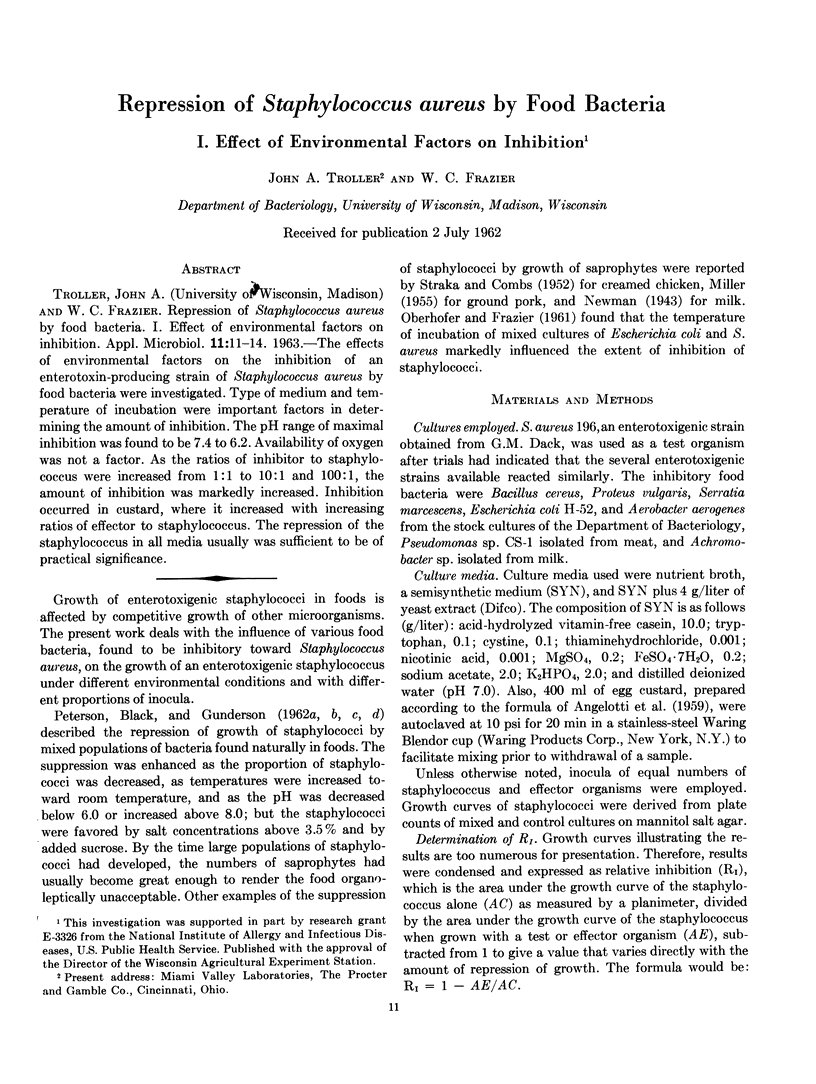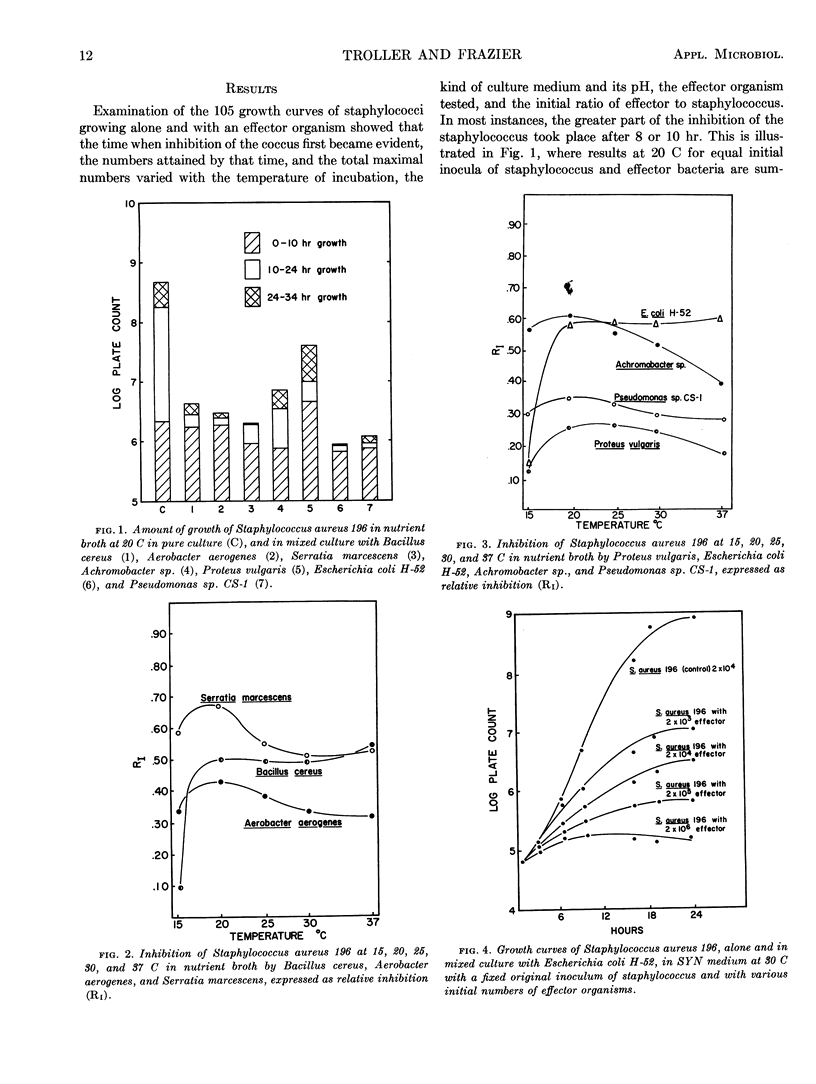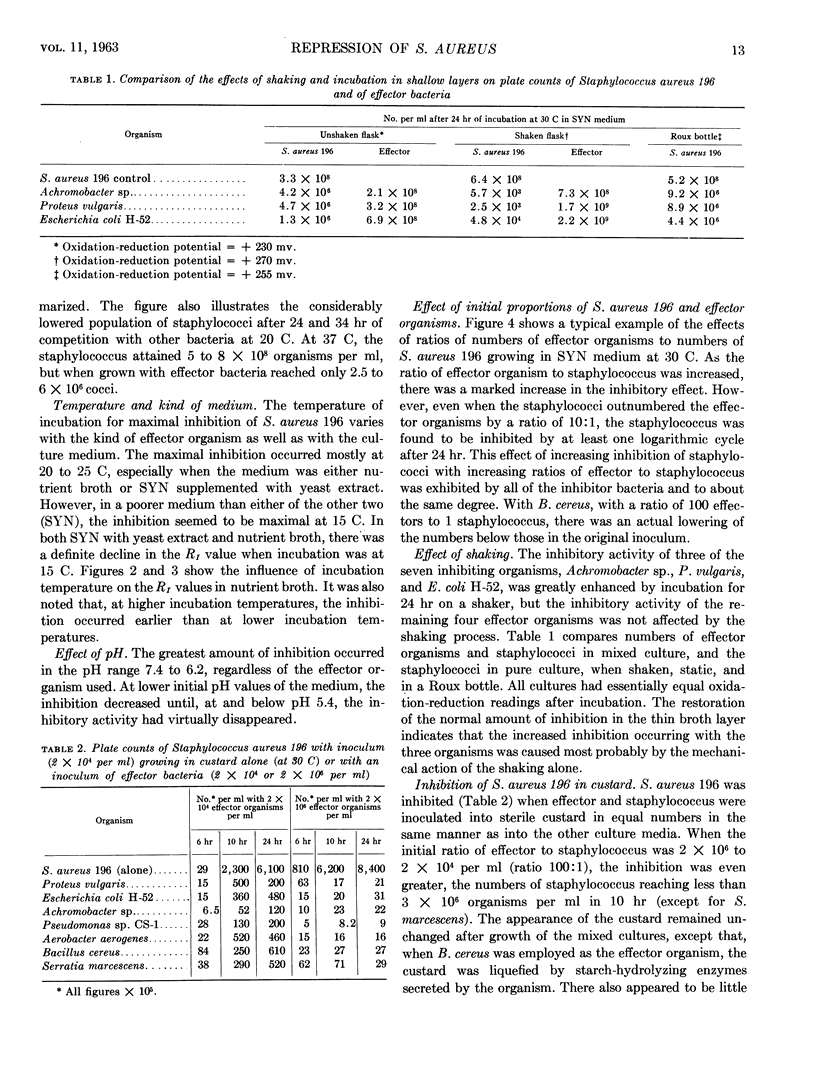Abstract
The effects of environmental factors on the inhibition of an enterotoxin-producing strain of Staphylococcus aureus by food bacteria were investigated. Type of medium and temperature of incubation were important factors in determining the amount of inhibition. The pH range of maximal inhibition was found to be 7.4 to 6.2. Availability of oxygen was not a factor. As the ratios of inhibitor to staphylococcus were increased from 1:1 to 10:1 and 100:1, the amount of inhibition was markedly increased. Inhibition occurred in custard, where it increased with increasing ratios of effector to staphylococcus. The repression of the staphylococcus in all media usually was sufficient to be of practical significance.
Full text
PDF



Selected References
These references are in PubMed. This may not be the complete list of references from this article.
- PETERSON A. C., BLACK J. J., GUNDERSON M. F. Staphylococci in competition. I. Growth of naturally occurring mixed populations in precooked frozen foods during defrost. Appl Microbiol. 1962 Jan;10:16–22. doi: 10.1128/am.10.1.16-22.1962. [DOI] [PMC free article] [PubMed] [Google Scholar]
- PETERSON A. C., BLACK J. J., GUNDERSON M. F. Staphylococci in competition. II. Effect of total numbers and proportion of staphylococci in mixed cultures on growth in artificial culture medium. Appl Microbiol. 1962 Jan;10:23–30. doi: 10.1128/am.10.1.23-30.1962. [DOI] [PMC free article] [PubMed] [Google Scholar]


